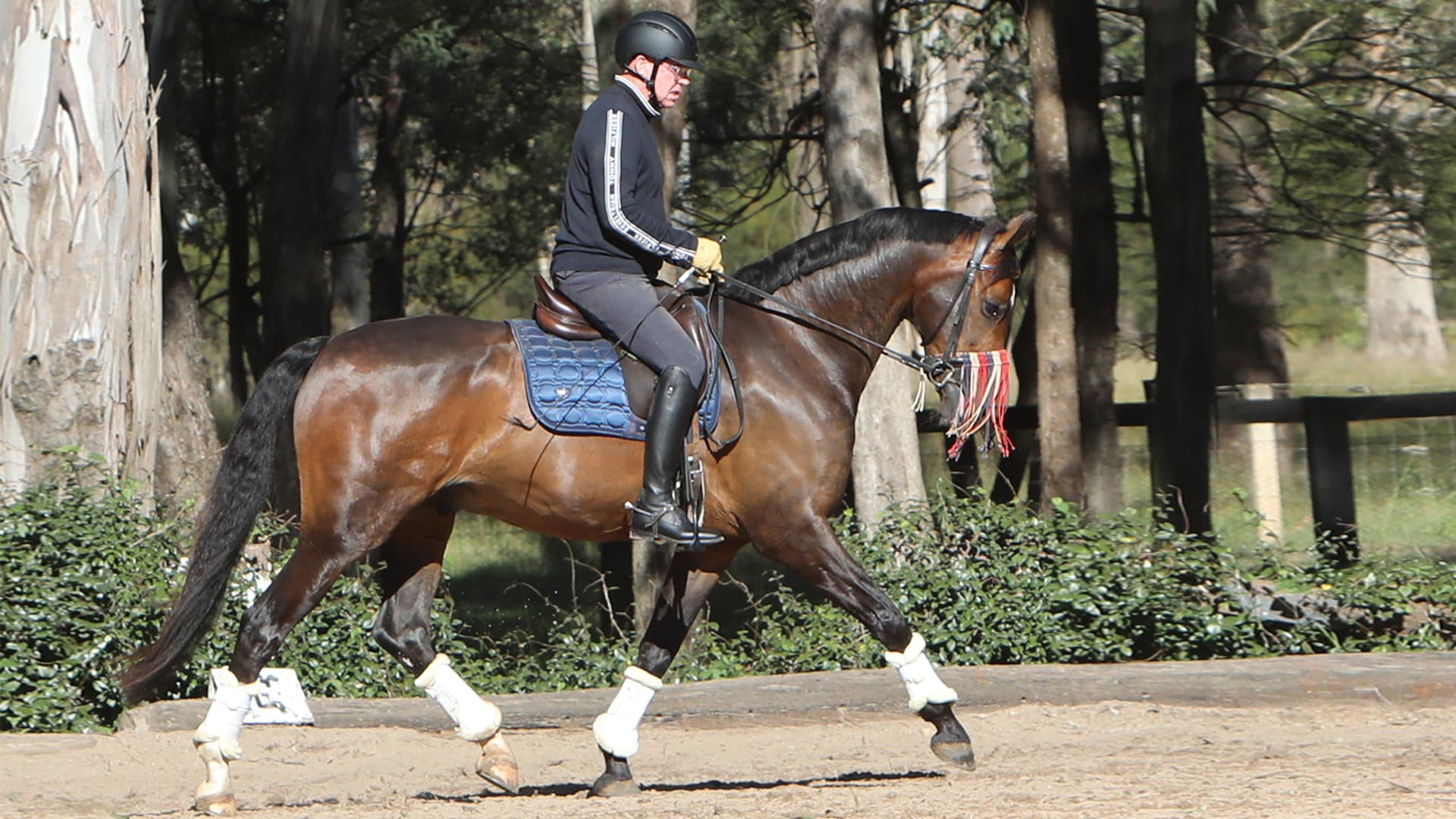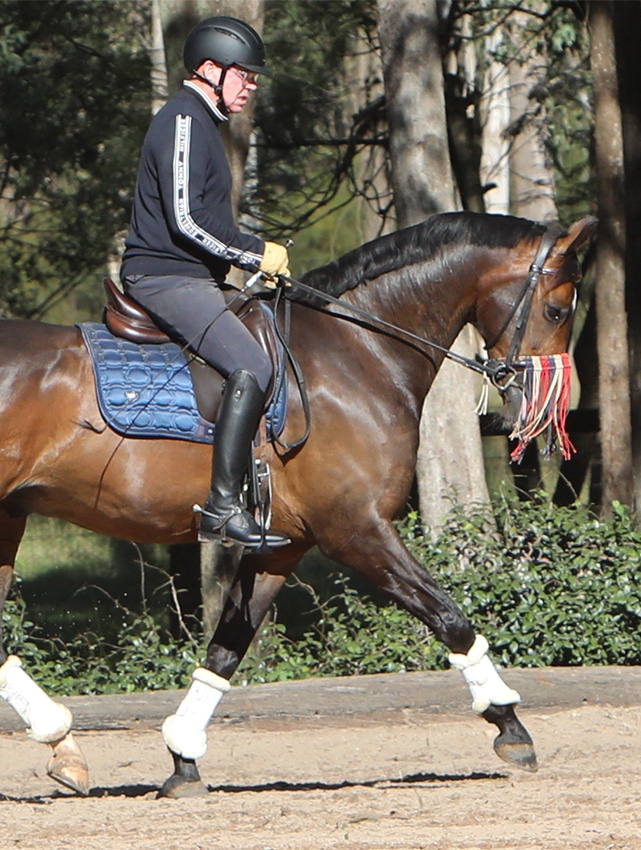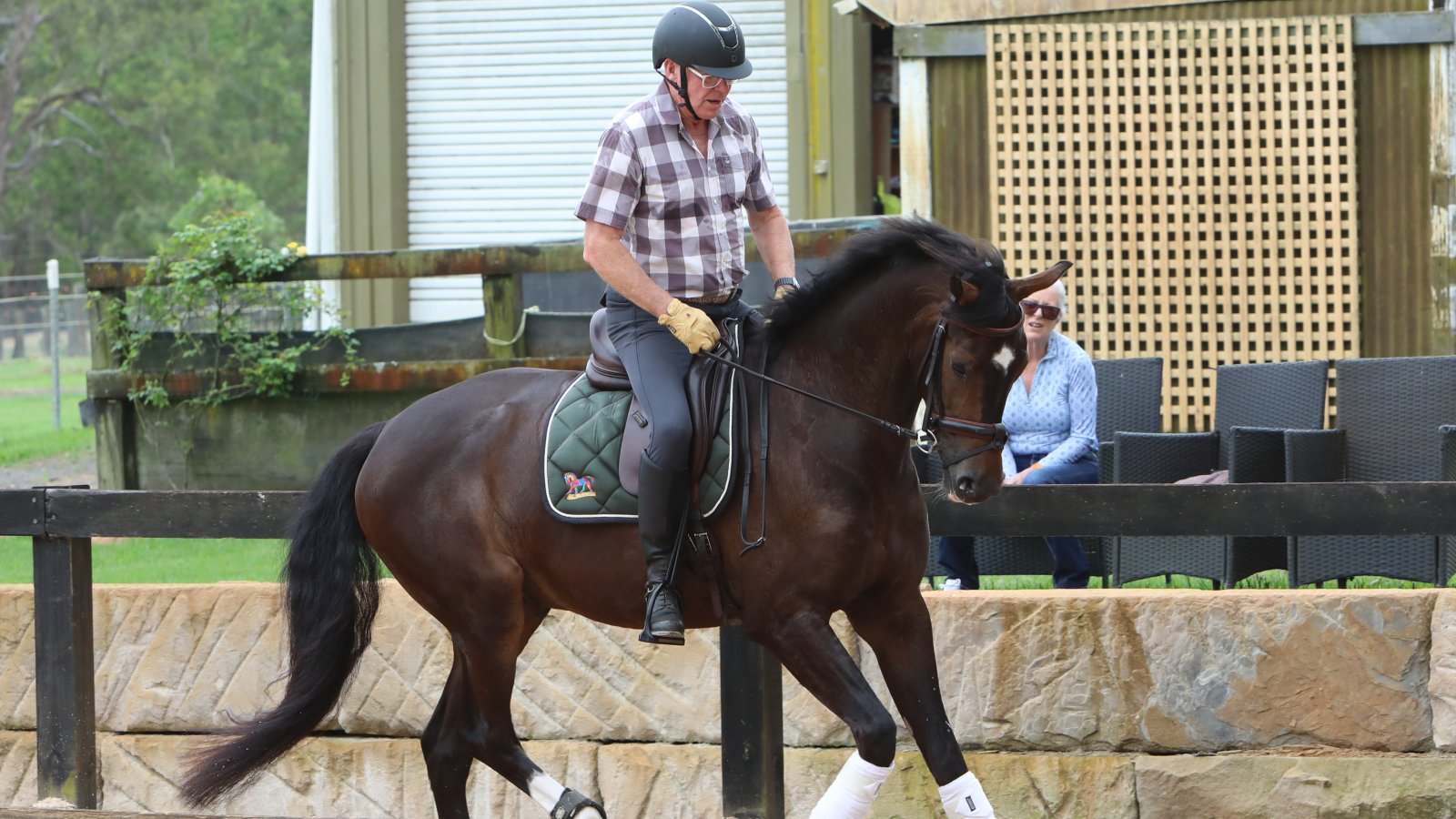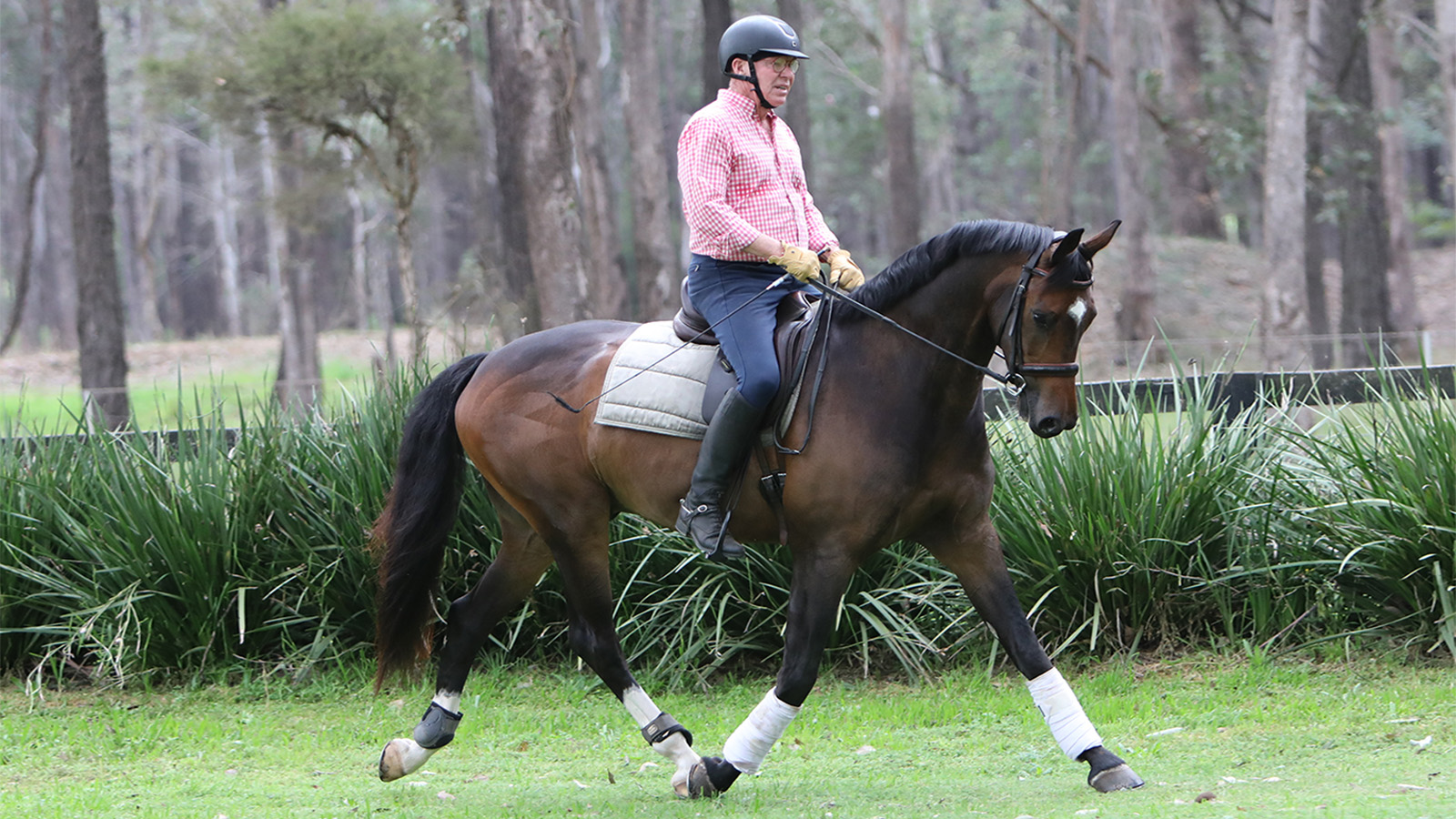The journey continues with Bloomfield Vision, affectionately known in the stables as ‘Jeremy’. Two years ago, Jeremy developed headshaking — an affliction that has led us on a long and complex journey.
There have been moments of real progress and joy, and others filled with uncertainty and frustration. But through it all, his beauty and generosity inspire me, both physically and mentally.
Horses with anxiety or neurological issues like headshaking cannot be helped through physical training alone. It takes a deep understanding of their mental state, emotional needs and, most importantly, empathy.
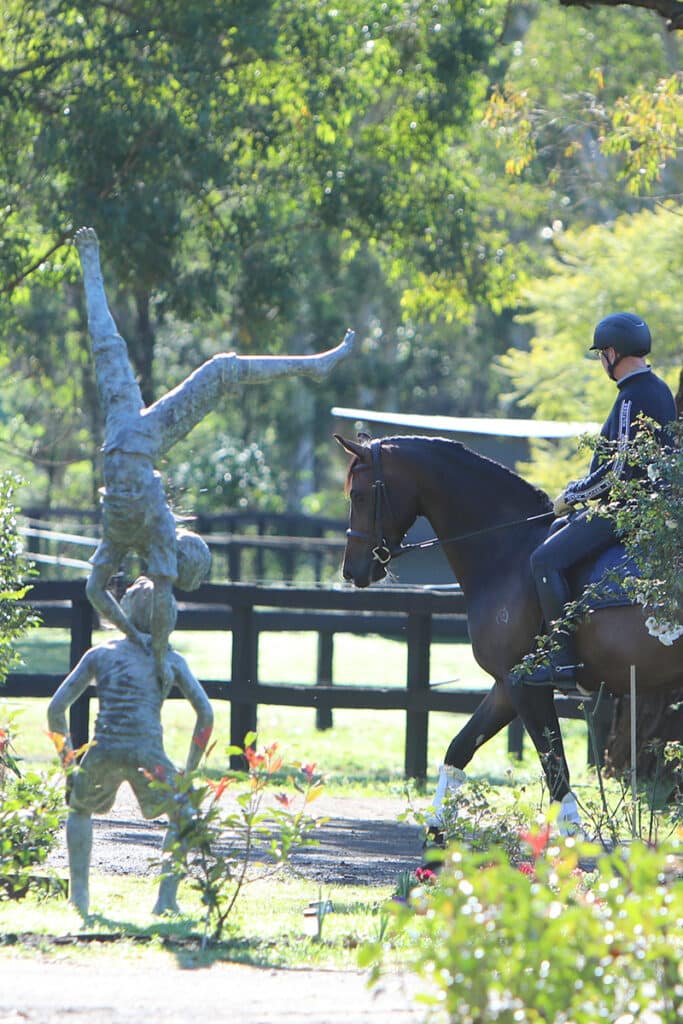
Roger has experienced many highs and lows on his journey with Jeremy. Image supplied.
“His beauty and
generosity inspire me.”
A LONG ROAD OF INVESTIGATION
From the beginning, Jeremy underwent a full battery of tests—scans, ultrasounds, X-rays of the neck, mandibular joint, and sinuses. He was treated with nebulisers and various medications, though none made a significant difference. Many advised that he be retired or left to his own devices, that he would never be reliable under saddle again.
But I made a promise to myself: I would research, explore, and trial every possibility—no matter how small—to find some degree of relief for him. It was never about a “cure,” but about making his life more comfortable and rideable.
Jeremy’s condition is unpredictable. His headshaking isn’t clearly triggered by light, weather, or feed. Though his diet has been thoroughly reviewed and corrected, nothing has conclusively emerged as the cause. What’s consistent is the irritation around his nostrils and lower face. He frequently stops to rub his nose vigorously on his cannon bones, always on both sides.
While the dramatic head flicking seen in the early stages has lessened, the problem hasn’t disappeared.
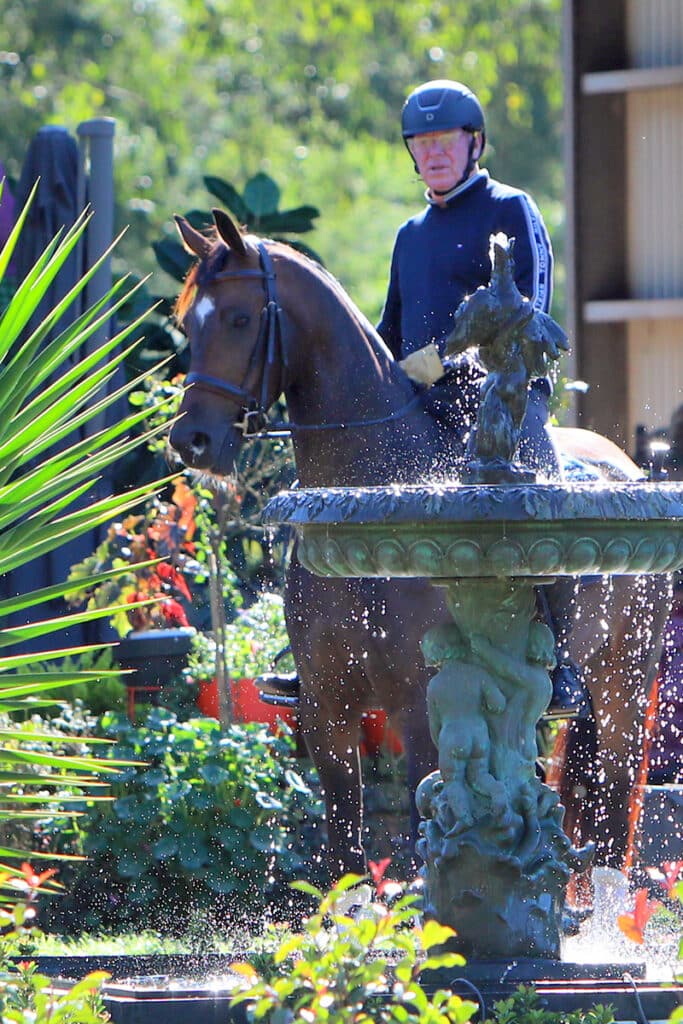
Roger has tried endless ways to help treat Jeremy’s headshaking, with varying levels of relief. Image supplied.
A TURNING POINT: POSEIDON AND GUT HEALTH
One of the first meaningful improvements came after engaging with the team at Poseidon Equine. Their support and products were invaluable. I took a deep dive into the connection between gut health and neurological responses, and began Jeremy on MetaboLize, a gut support supplement.
The difference was remarkable. When the product ran out, his headshaking returned almost immediately. Once reintroduced, the symptoms diminished again. While it didn’t solve the problem entirely, it made a noticeable difference in his comfort and overall rideability.
TACK, BITS & NOSEBANDS
In the process of trying to isolate the source of his discomfort, I experimented with every combination of bridles, bits, and nosebands imaginable. While some seemed to help a little, none were consistent. It was mentally and physically exhausting — for both of us.
Then came a moment I’ll never forget. It was a particularly bad day, with Jeremy overwhelmed and almost unrideable. Something jogged my memory — an old string fly veil I’d seen used by eventer Prue Barrett on a grey horse preparing for the 2000 Olympics. I remembered her saying it helped reduce head flicking.
I rode back to the stables, and my dear friend Helen Chugg — who, thank goodness, keeps everything — found one tucked away in her gear. I put it on Jeremy and returned to the arena.
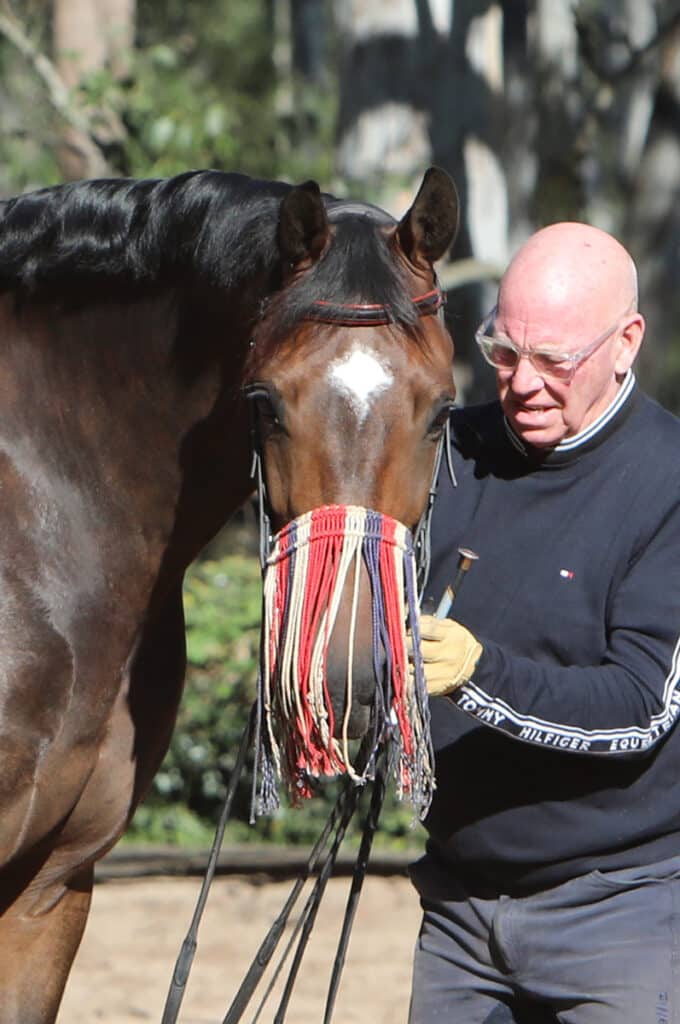
Roger has found that a string flyveil, attached to the noseband, has provided Jeremy with some relief. Image supplied.
“I now ride a
happy, trainable and
expressive horse.”
It was like a miracle. The headshaking didn’t stop completely, but it reduced dramatically. Since that day, he has worn the string fly veil on every ride. The long tassels seem to simulate the rubbing action that brings him comfort, replacing his need to stop and rub against his legs.
I now ride a happy, trainable and expressive horse. He is developing piaffe, performing flying changes, and schooling half-passes in both canter and trot. His willingness and attitude are outstanding, but I always stay in tune with his emotional state. If he becomes unsettled, I allow him a moment — loosen the reins, let him rub or snort — and then he’s ready to go again. It’s become our way, and it works beautifully.
SUDDEN REGRESSION THEN A BREAKTHROUGH
Not long ago, Jeremy experienced a sudden regression. He became incredibly anxious — not headshaking so much as mental disarray. The calm, connected horse I knew was gone. He became spooky, inattentive, and scattered. He would spin, refuse to go forward, and break rhythm constantly.
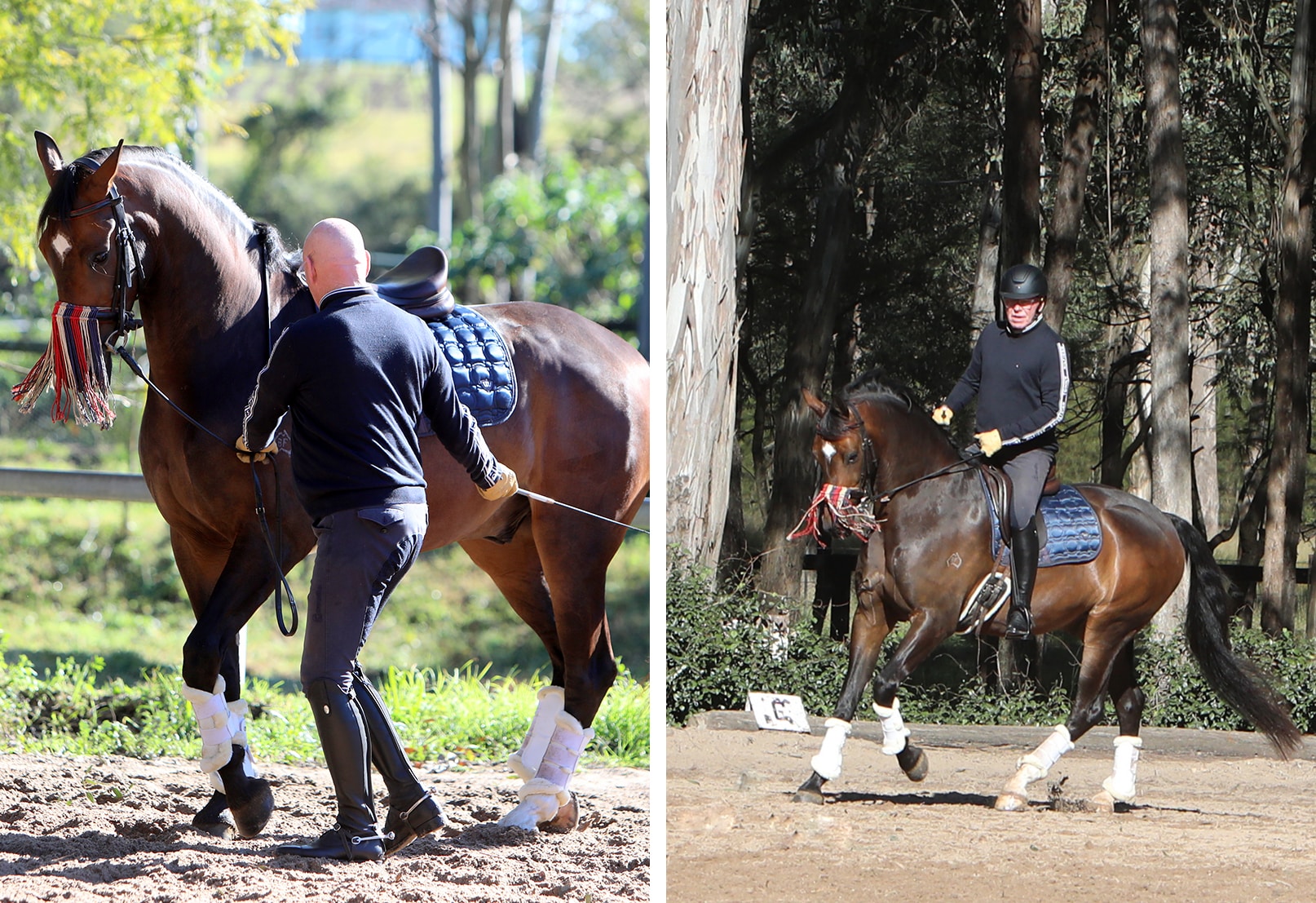
Jeremy’s training is going well, and he’s even beginning to develop the first steps of piaffe. Image supplied.
After consulting with my vet, we explored the possibility that it was again gut-related. We introduced Omeprazole, an injectable acid-reducing treatment. Within 24 hours, he transformed. The anxiety vanished, and he returned to his grounded, relaxed self. It was staggering.
LISTEN TO YOUR HORSE
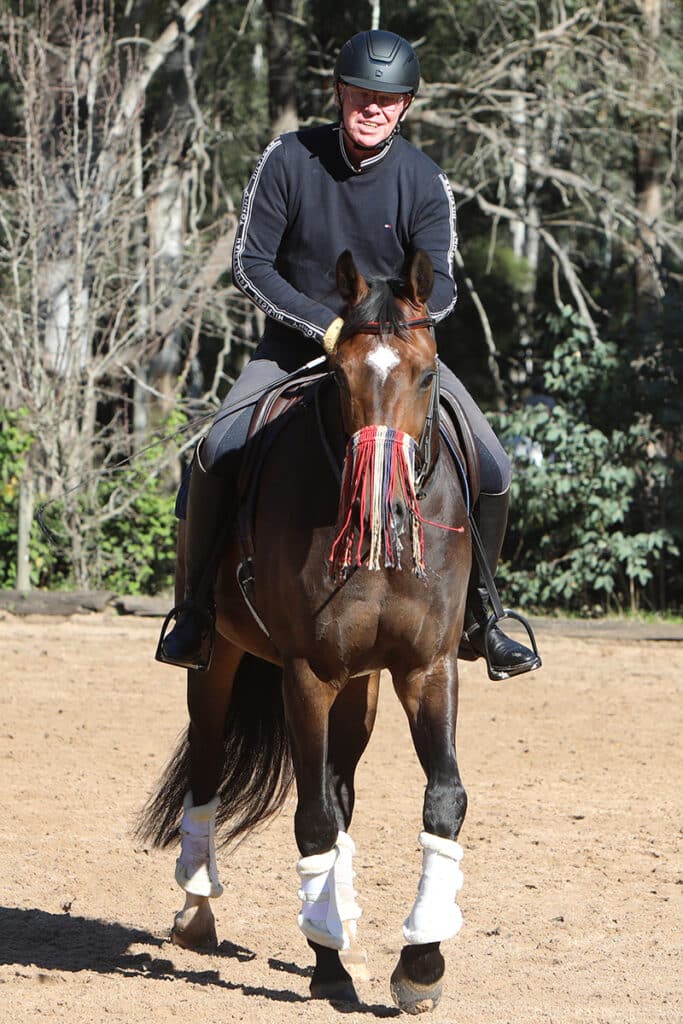
Roger says his ongoing journey with Jeremy has taught him so much over the past few years. Image supplied.
“Don’t give up, stay
curious and listen
to your horse.”
This journey with Jeremy has taught me more than I could have imagined — about patience, innovation and listening to what a horse is trying to tell you. He is a truly special horse, and while the path has been anything but simple, it’s been incredibly rewarding.
I look forward to updating you as we continue. For anyone dealing with a similar issue: don’t give up, stay curious, and listen to your horse.
This article is an account of personal experience and based on anecdotal evidence; it is not intended as health advice. As with any equine health concern, always consult your veterinarian regarding available treatment options for your horse. EQ
